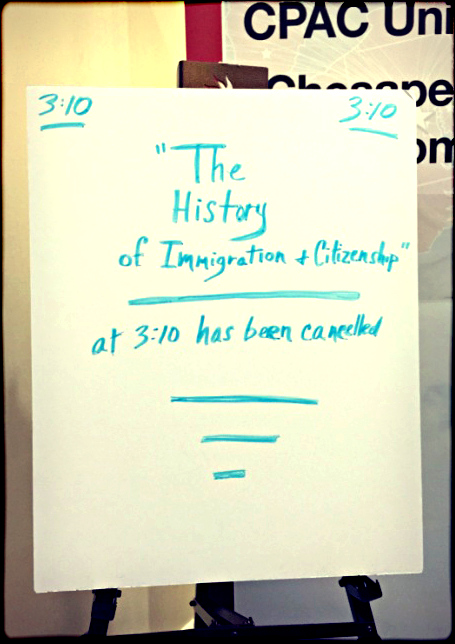Last week conservatives gathered outside Washington, D.C., for the Conservative Political Action Conference (CPAC). In addition to speakers taking the main stage, the convention also included a plethora of break-out sessions. The subjects of these sessions varied greatly, ranging from media training to the interaction of democracy and Islam.

Three break-out sessions on immigration were scheduled: "Immigration: Can Conservatives Reach a Consensus", "The History of Immigration and Citizenship", and "If We Build It, They Won't Come". Clearly, immigration was an important point of discussion.
Unfortunately, and particularly disappointing, the Friday session on "History of Immigration and Citizenship" was cancelled. Given the large percentage of student attendees (47 percent of participants in CPAC's straw poll identified themselves as students, the same percentage that fell within the age span of 18-25 years olds) at this year's convention, this was a lost opportunity. Part of the "CPAC University" series of educational sessions, it had the potential to provide CPAC participants with a stronger foundation for understanding one of the most pressing issues of today. There was no indication of why the session was cancelled; it might have stemmed from the perennial tension between CPAC's sponsoring organization, the American Conservative Union, which supports amnesty and increased immigration, and the actual activists who attend, who tend to be more hawkish on immigration.
Being familiar with the extensive history of immigration and citizenship allows one to better understand today's debates. Yes, the United States was built in part as a nation of immigrants, but contexts change. According to government records, nine million persons were unemployed in January 2015; millions more have dropped out of the job market altogether. Data show that "The nation's immigrant population (legal and illegal) hit a record 41.3 million in July 2013, an increase of 1.4 million since July 2010. Since 2000, the immigrant population is up 10.2 million." Given these trends, it is imperative to recognize differing contexts in order to understand the past and future of impacts of immigration on the United States.
Ms. Luna is a student at Sewanee: University of the South.
